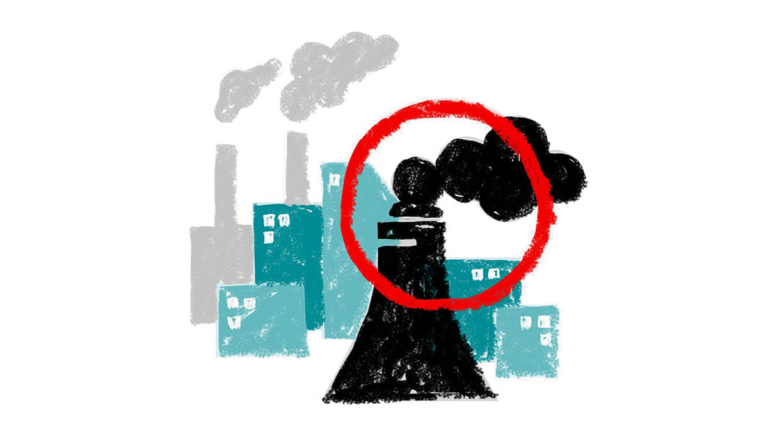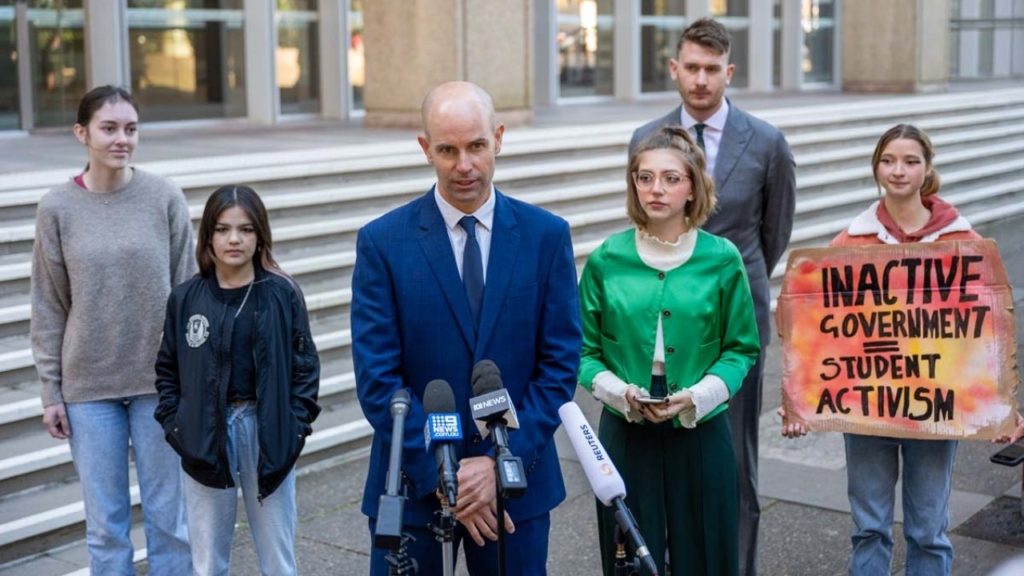Casebook Info
In September 2020, a group of young people filed a petition in an Australian court to prevent the Minister for the Environment from approving a coal mine expansion project, arguing that approval of this project would violate a duty of care that the Minister owed the youth plaintiffs. The Federal Court of Australia initially established an important precedent, finding that the Minister for the Environment – part of the executive branch of the Australian government – must take reasonable care to avoid causing personal injury to at least Australian children when deciding whether or not the coal mine expansion project should be approved. In other words, the Court recognized that the Minister for the Environment owed the youth plaintiffs a duty of care when it came to fossil fuel projects.
In a setback for the plaintiffs, however, the Court later reversed this finding in an appeal by the Minister for the Environment, concluding that the previous judge erred in recognizing such a duty. The evolution of this case serves as a reminder that bad outcomes are still a real possibility in climate litigation, even in instances where rulings are initially quite promising.
- Year Filed 2020
- Year of Most Recent Ruling 2022
- Year of Final Ruling 2022
- Jurisdiction Australia
- Court Name Federal Court of Australia
- Primary Focus Mitigation
- Ruling On Merits
- Plaintiff(s) N/A
- Respondent(s) Minister for the Environment (Australia); Vickery Coal Pty Ltd (wholly owned subsidiary of Whitehaven Coal Pty Ltd) [the developer of the opposed coal mine]
- Outcome Ruling for the respondents
- Organizational leader of the litigation Equity Generation Lawyers
- Link to the decision/ruling
Background
Australia is not known for its progressive climate politics; indeed, it exports more coal than almost any other country in the world. Climate advocates in Australia, however, are challenging their country’s poor climate record, and the youth activists in this case are part of this push.
In 2016, the developer of the Vickery Coal Project – the New South Wales coal mine challenged in this case – applied to the Minister for the Environment for permission to expand the challenged coal mine and increase extraction from it, pursuant to Australian environmental law. The Minister, at the time the case was litigated, faced a decision on whether or not to approve the request to expand the coal mine, and this decision is the subject of the case.
“Unless the extraction and burning of fossil fuels, coal in particular, is constrained, those extraordinary rates of increase [in the concentration of atmospheric carbon dioxide] will continue. [The] extraordinary rates of increase were caused by human activities. Of all human activities, the burning of coal has caused, causes, and unless constrained will continue to cause, the greatest proportion of those extraordinary rates of increase.”
Complaint
In September 2020, a group of young Australians filed a petition in the Federal Court of Australia seeking an injunction, among other things, to prevent the Minister for the Environment from approving the coal mine expansion project. The youth plaintiffs argued that climate change – caused by the fossil fuel-driven increase in the concentration of carbon dioxide (CO2) in the atmosphere – creates substantial risks of harm globally and in Australia, which they are likely to suffer if greenhouse gas emissions are not adequately constrained. Any increase in emissions increases the likelihood that people, including the plaintiffs, will suffer harms associated with climate change. In particular, according to the plaintiffs, any marginal increase in the concentration of CO2 in the atmosphere increases the risk that the global climate system will reach a “tipping point,” therefore triggering catastrophic consequences for the stability of the climate system and inflicting grave harms on the youth plaintiffs and children in Australia more generally.
While the plaintiffs can’t directly control the production and use of fossil fuels like coal, the respondent – the Minister for the Environment – can. The Minister, in particular, has the authority under Australian environmental law to approve (or not) proposed fossil fuel projects, like coal mine expansions. The coal mine expansion project targeted in this case would, if allowed to proceed, substantially increase the amount of coal available for use and thus increase the concentration of carbon dioxide in the atmosphere as well as the likelihood that the youth plaintiffs would experience grave harms from worsening climate change. As a result, the plaintiffs argued that the Minister has a duty of care stemming from the law of negligence to exercise her authority to approve fossil fuel projects “with reasonable care to not cause them harm.” [Complaint]. Approving the coal mine project – and thereby permitting the expansion of a fuel driving the climate emergency – would violate that duty. The plaintiffs, accordingly, requested an injunction to prevent the Minister from allowing the expansion of the coal mine to proceed.
“The less coal that is burned on Earth from today, the lower will be the level of CO2 concentration when [the rate of increase in CO2 concentration reaches zero].”
Complaint
In May 2021, the Federal Court handed down its initial decision. Though the Court ultimately denied the plaintiffs’ request for an injunction and dismissed their claims, at this stage, it established an important precedent: the Minister for the Environment – part of the executive branch of the Australian government – must take reasonable care to avoid causing personal injury to at least Australian children when deciding whether or not the coal mine expansion project should be approved.
To begin, the judge noted that the duty of care the plaintiffs urged him to recognize would be new: there was no basis for it in prior case law. So, he looked to the law of negligence to determine whether it would be appropriate to find that the Minister had a duty to act reasonably and according to certain limitations in making her decision on the project.
In short, this judge turned to the list of factors developed within the case law on negligence that guide whether a given court should recognize a new duty of care. These factors include: control, knowledge, responsibility, vulnerability, the foreseeability of harm, and coherence and consistency with Australian environmental law and public law principles. Some factors weighed in favor of the existence of a duty of care – including foreseeability of harm, vulnerability, responsibility, and knowledge – while others – including the proposed duty’s consistency with statutory and administrative law – weighed at least slightly against it.
“It is difficult to characterise in a single phrase the devastation that the plausible evidence presented in this proceeding forecasts for the Children. As Australian adults know their country, Australia will be lost and the World as we know it gone as well. The physical environment will be harsher, far more extreme and devastatingly brutal when angry. As for the human experience – quality of life, opportunities to partake in nature’s treasures, the capacity to grow and prosper – all will be greatly diminished. Lives will be cut short. Trauma will be far more common and good health harder to hold and maintain. None of this will be the fault of nature itself. It will largely be inflicted by the inaction of this generation of adults, in what might fairly be described as the greatest inter-generational injustice ever inflicted by one generation of humans upon the next.”
Decision
After assessing each relevant factor, the Court ultimately found that the reasons for recognizing the proposed duty of care outweighed the reasons against it. This finding was specifically with respect to personal – or bodily – injury; the Court did not find that the factors weighed in favor of the proposed duty of care for monetary losses only. From there, the conclusion was simple: the Court recognized the duty of care, at least with respect to the youth plaintiffs and the Australian children they represented and as it concerned bodily injury.
After recognizing the new duty of care, the Court turned its attention to whether the plaintiffs’ requested injunction should be granted. Ultimately, the Court decided that – at this time – it would not. This aspect of the decision hinged on the fact that the Minister had not yet actually decided to approve the expansion project and that it was not a foregone conclusion that she would. In other words, whether the Minister actually breached the newly recognized duty of care would require looking at the exact nature of her decision, which she had not yet made.
All, however, was not well. The Minister appealed this decision, ultimately resulting in a final decision by the Federal Court of Australia that rescinded the recognition of a new duty of care.
The judge in the final decision, to summarize, found that the initial judge erred in recognizing a duty of care in this case because the imposition of the duty: (1) violates the constitutional division of authority between the legislative, executive, and judicial branches and represents an impermissible foray of the judicial branch into policymaking; (2) involves errors of law insofar as the duty articulated in this case is inconsistent with the relevant environmental statutory scheme; and (3) was inappropriate given the context, including the plaintiffs’ lack of special vulnerability, the Minister’s lack of control over climate harms, and the highly abstract nature of the suggested duty.
The final decision relied heavily on the idea that this dispute was, at its core, over the adequacy of national climate laws and regulations, especially since the duty in question involves consideration of whether scope 3 emissions – meaning, those emissions generated from the burning of fossil fuel products like coal – should count towards the emissions of the exporting or importing country. This, according to the Court, means that the duty is “of core, indeed high, policy-making for the Executive and Parliament involving questions of policy (scientific, economic, social, industrial and political) which are unsuitable for the Judicial branch to resolve” in tort-based lawsuits, such as this one.
“[D]ecisions that involve certain types of policy and which may have important physical consequences upon the lives, health, well-being, property and economic interests of people may be made by the government in its decision-making role in the interests of the polity which cannot be judged by a legal standard or the consideration of which cannot be reliably made in a curial environment of private litigation. There are choices to be made by government which may affect lives, health and property which are made by reference to expertise unavailable or less than satisfactorily available to courts, by reference to political and democratic choices involving relationships of interests incommensurable by reference to any legal standard and which are appropriate for democratic (that is political) accountability, not by reference to monetary compensation where a legal standard to judge the choice is absent or faint.”
Decision
“Here, if the duty is to be imposed, the considerations and judgements attending the decision will involve an evaluation of the adequacy of national and State policies taken within the framework of international agreement and whether such policy or policies was or were adequate and whether it or they should be persisted with or remade. Such policy or policies and such agreement draw out and are based on multi-disciplinary considerations including environmental, climatic, economic, social and political considerations. These are not only the natural province of the Executive and Parliament, but also, by their nature and character as attending the safety and wellbeing of all Australians, and (on the uncontested evidence) the wellbeing of the world and humanity, comprise the foundation of the (public or political) duty of consideration and policy formulation by at least the Executive on this subject. The duty concerns matters of so-called “core” policy.”
Decision
“To the extent that the evidence and the uncontested risks of climate catastrophe call forth a duty of the Minister or the Executive of the Commonwealth, it is a political duty: to the people of Australia.”
Decision
This case lays bare at least some of the risks associated with litigating climate cases in the court. Namely, initial positive outcomes – in this case, the initial recognition of the duty of care – can solidify into false victories for the plaintiffs. Moreover, any climate case brought in front of the judiciary risks setting bad precedent, which can be a challenge not just for the plaintiffs but for the broader community of climate litigators as well. This isn’t to say that practitioners should necessarily be wary of applying old legal theories – in this case, duties of care that arise from the law of negligence – to climate harms but rather that adequately understanding the risks associated with litigation allows practitioners to prepare in advance and ultimately make better decisions about the overall strategic value of a given case.
- 8 The number of Australian children that filed the complaint in this case
- 33 The additional amount of coal in million tonnes that would be extracted from a coal mine if the expansion project is approved
- 100 The approximate amount in metric tons of additional carbon dioxide (CO2) that would be emitted as a result of the coal mine expansion project
- 26 The number of years the expansion project would operate to extract the additional coal
Strategies
Challenging a fossil fuel project

In this case, the young plaintiffs take aim at a coal mine project, which would increase the amount of fossil fuels (coal) available for use and thus raise the concentration of carbon dioxide in the atmosphere, bringing the world closer to dangerous climate tipping points. By challenging a project, this case joins the flurry of cases worldwide seeking to keep fossil fuels in the ground by targeting proposed and existing fossil fuel infrastructure.
Focusing on youth and future generations

The plaintiffs here were minors, which allowed them to make claims regarding their special vulnerability as well as the likelihood of exposure to future climate harms as adults.
Applying a developed body of law in the context of climate change

Instead of trying to develop an entirely new body of law, the plaintiffs in this case took a centuries-old field of law – the law of negligence – and applied it to climate change and fossil fuel projects. This meant that they had a rich body of case law to draw upon to make their case as did the Court when it issued both its initial and final decision. Moreover, by selecting a more “traditional” field of law and type of claim, it may have been easier for the initial judge to recognize a new duty of care because it only pushed the boundaries of existing case law instead of developing a new doctrine or theory with limited precedent.
Take-aways
Making use of an existing field of law and applying it to climate change can be effective but it is not guaranteed to be accepted by the adjudicating court.
There is no duty stemming from tort law to exercise reasonable care not to cause personal harm to children in approving fossil fuel projects (according to this case, at least).
Impact
The case has not yet had any direct impacts on the ground, since the plaintiffs’ request for an injunction was denied and ultimately the recognition of the articulated duty of care – that a government official must take reasonable care to avoid causing personal injury to at least Australian children when deciding whether or not to approve a fossil fuel project – was rescinded.
The case nevertheless made waves globally, in large part because of the Court’s initial recognition of a new duty of care. Many courts around the world look to decisions issued by courts in other countries, so the ruling may have mixed effects: those courts inclined to recognize a similar duty of care in their own jurisdictions may look to the initial ruling as persuasive, whereas those opposed may look to the final decision as charting the correct path forward. Either way, the case demonstrates to observers around the world that outcomes in climate cases aren’t truly settled until the last ruling is issued.

